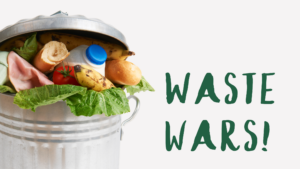Who would have thought that, when it comes to promoting high-sugar, high-kilojoule snacks, we need look no further than our allies in the health care system?
There may be people who visit their local pharmacy to fill a prescription for chocolate bars, but I haven’t met them. Filling such a prescription would be easy, however, given how many community pharmacies not only sell confectionary, but display it at the classic impulse-buy location: the check-out.
I am not talking about the odd packet of boiled sweets or jelly beans, but multi-shelf displays of standard chocolate bars and other confectionary items strategically occupying that child-eye-level space at the front of the sales counter.
Two weeks ago, I was so surprised to see one of these displays at a local pharmacy that I wrote a letter about it to the Canberra Times. I thought it was reasonable to ask whether the credibility that pharmacists expect as health care professionals is consistent with selling products whose consumption is likely to be unhelpful, or even harmful, to the health of many of their customers – customers who visit pharmacies to obtain treatment or advice for health problems.
Community pharmacies sell a wide range of goods, and there have been recent questions and criticisms about pharmacies selling products which are not safe or effective. But what about items which are not only unlikely to benefit health, but to harm it – such as high-sugar, high-fat, high-kilojoule snack products? Are pharmacists who sell these products meeting their professional obligation to put consumers’ health and wellbeing first and to ‘promote good health and wellbeing’?
Having your product available and displayed in as many outlets as possible not only encourages unplanned purchases but ‘normalises’ the product as ‘always’ foods rather than ‘sometimes’ foods. And what better ‘product placement’ could there be than to associate unhealthy snacks with outlets whose core business is ‘to assist people who are ill and those who wish to maintain good health or improve their health status’? To further confuse the issue, many pharmacies display chocolate bars and other confectionary on the shelf alongside throat lozenges and other medicinal or therapeutic products.
Australian pharmacists decided years ago that the sale of tobacco and alcohol products constituted unprofessional conduct. When it comes to unhealthy food, however, the Pharmaceutical Society of Australia simply advises that, ‘When considering service or product availability from a pharmacy, the pharmacist will need to carefully balance issues such as consumer demand and commercial factors with quality, safety and efficacy.’ Why not adopt professional standards which discourage the sale of non-health related confectionery and drinks and prohibit their display at sales points or at medicines counters?
Australia’s community pharmacies – more than 5000 of them – serve as important points of contact with the health care system for people with minor ailments and injuries as well as for those needing care for ongoing conditions. It is estimated that each year there are more than 14 visits to a community pharmacy for every man, woman and child in Australia, and 3.9 million Australians ask pharmacists for health-related advice every year.
There is an ongoing debate about how pharmacists deal with the tensions between their roles as health professionals and business owners, and it has been suggested that we are approaching a new crunch point in that debate.
I visited four community pharmacies to get the pharmacists’ views about selling unhealthy food products. One showed me his extensive range of sugar-free confectionary and said that he keeps a small range of chocolate bars and other snacks as a ‘convenience’ for customers who would otherwise have to queue in supermarkets. Another pharmacist explained that small chocolate items are available for parents who want to give their children a treat. Another pharmacy sells no sweets at all except small bags of jelly beans and tins of boiled ‘travel sweets.’
The pharmacist whose sizeable confectionery display prompted my letter to the newspaper was keen to assure me that, “We’re not a chocolate store. We’re not a candy store. We’re a health destination.” He told me that he plans to reduce the amount of space devoted to confectionary and to use the area for seasonal non-food items. I’ll let you know if he keeps his word.
Update
The pharmacist whose display prompted my original concern would like it to be known that he had been giving this issue some thought prior to my having raised it with him. He attributed much of the current situation to the practices of a previous buyer.



